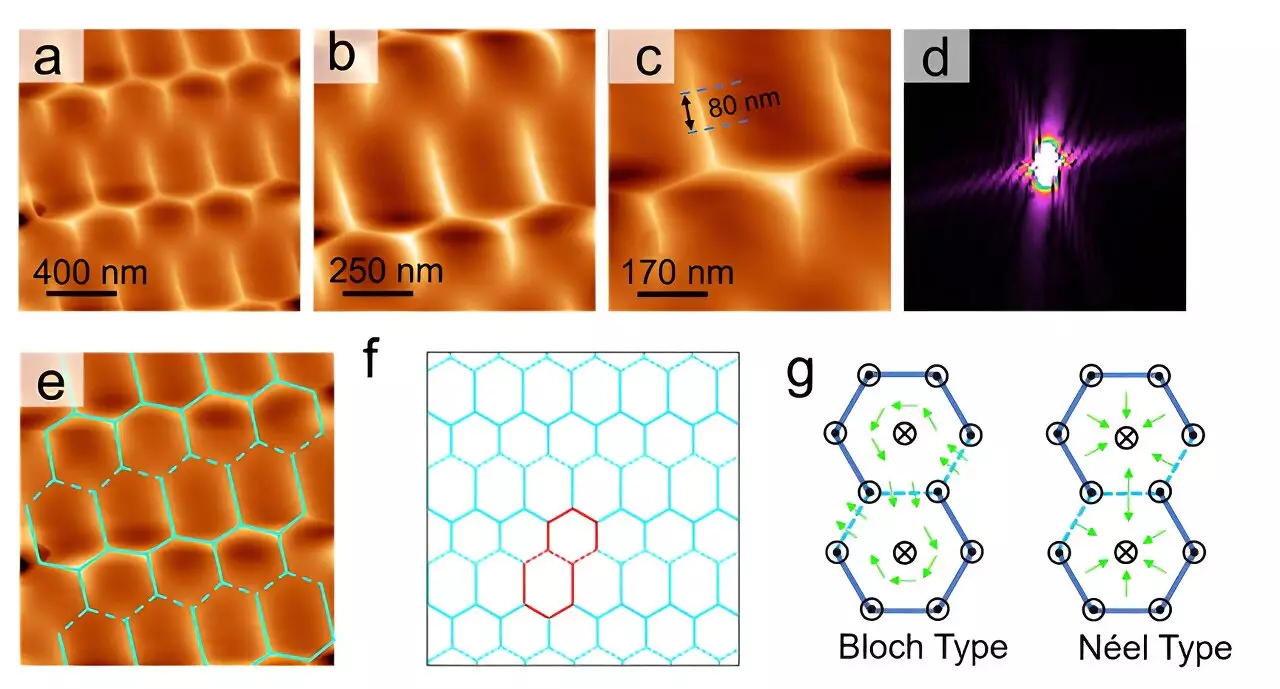Kagome lattices have garnered profound interest in the field of condensed matter physics due to their unique structural and electronic properties. Characterized by a two-dimensional arrangement of corner-sharing triangles, these lattices exhibit intriguing attributes such as Dirac points and flat bands, which are critical for phenomena like topological magnetism and unconventional superconductivity. Recent advancements in our understanding of these structures reveal their potential in quantum computing and high-temperature superconductivity, offering a rich landscape for future research.
A pioneering research project led by a collaborative team from Hefei Institutes of Physical Science and Anhui University has made significant strides in unraveling the intrinsic magnetic configurations within kagome lattices. As reported in Advanced Science, the researchers utilized state-of-the-art magnetic force microscopy (MFM) and electron paramagnetic resonance spectroscopy to make unprecedented observations of magnetic behaviors in the binary kagome single crystal Fe3Sn2. This investigation illuminates the intricate relationship between lattice structures and magnetic properties, a field that has been riddled with ambiguities.
The team uncovered a novel magnetic array with a broken hexagonal symmetry in Fe3Sn2. This discovery stems from the competition between the lattice’s inherent geometry and uniaxial magnetic anisotropy—a dynamic interplay that hints at a more complex behavior than previously acknowledged. Notably, Hall transport measurements corroborate the emergence of topologically broken spin configurations, marking a substantial addition to the body of knowledge surrounding these systems.
Moreover, variable-temperature experiments provided insight into the nature of magnetic transitions within these materials. Contrary to earlier theories that posited a first-order transition, the findings suggest a second-order or weak first-order phase transition occurs, effectively reshaping our understanding of the magnetic landscape in such lattices. This revelation designates an in-plane ferromagnetic state at low temperatures, a significant departure from earlier assumptions about the presence of spin-glass states.
In light of these findings, the research group was able to formulate a new magnetic phase diagram for Fe3Sn2 that reflects these intricate dynamics. Quantitative MFM data have underscored persistent out-of-plane magnetic components at lower temperatures, further enriching the discourse on magnetic configurations in kagome lattices. The application of the Kane-Mele model provided a coherent explanation for the observed phenomenon of a Dirac gap opening at low temperatures, counteracting previous hypotheses that suggested different underlying mechanisms.
The insights derived from this research not only enhance our comprehension of magnetic configurations in kagome lattices but also lay the groundwork for future studies that could unlock new technologies centered on quantum computing and high-temperature superconductivity. The implications of understanding these intrinsic magnetic structures are profound, heralding opportunities for breakthroughs in material science and quantum technology. This research exemplifies the vibrant possibilities that arise when rigorous scientific inquiry meets innovative experimental techniques, promising to reshape our grasp of material behavior at atomic levels.


Leave a Reply